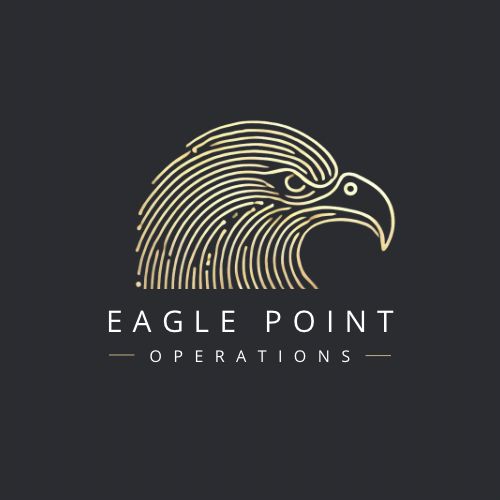Intelligence Gathering: The Hidden First Step of Every Attack
- Eagle Point Operations

- Aug 20
- 4 min read
When organizations think about security, the image that often comes to mind is the moment of attack: the forced entry, the insider bypass, or the attempted breach at the perimeter. What’s less visible, and far more dangerous, is what happens long before that moment. Adversaries do not move blindly. They study, they watch, they test. Their first move is not aggression, it’s intelligence gathering: the hidden first step of every attack.
Understanding this silent stage is critical. If an adversary is allowed to freely collect information about your operations, employees, or facility, they are already halfway to success. This article sheds light on how hostile actors gather intelligence before an operation, why it poses a growing risk, and what organizations must do to limit their exposure.
The Silent Phase Before the Storm
Most attacks are not spontaneous. They are planned with care, supported by deliberate intelligence collection. Adversaries, whether criminal groups, activist networks, or state-sponsored entities, invest time and patience in identifying vulnerabilities.
This process can include:
Open-source research (OSINT): Mining social media, websites, press releases, and employee profiles for useful details. Even a staff photo outside the office can reveal badge styles, building entry points, or routine schedules.
Physical reconnaissance: Watching the facility at different times of day, tracking patterns of guard rotations, deliveries, or executive movements.
Probing security systems: Subtle tests like triggering alarms, loitering near entrances, or attempting small breaches to gauge response times.
Human interaction: Casual conversations with staff, contractors, or even vendors to extract sensitive information without raising alarms.
What makes this phase so dangerous is its invisibility. Unlike a break-in or cyberattack, intelligence collection is often legal, quiet, and untraceable - until it isn’t.

Why Organizations Should Be Concerned
Far too often, companies underestimate this stage. The assumption is: “We’ll handle the threat when it happens.” But by then, it’s already too late.
Allowing adversaries to gather useful intelligence gives them:
A blueprint of weaknesses - where surveillance gaps exist, which employees are most approachable, which doors are least secured.
Confidence and precision - the ability to plan an operation that is low-risk, high-reward, and specifically tailored to your vulnerabilities.
A psychological edge - they know more about your environment than you know about their intentions.
History and case studies consistently show that successful attacks, whether corporate espionage, insider theft, or even acts of terrorism, are built on months of careful preparation. The organizations that fail to detect or disrupt this stage are the ones most easily compromised.
The Modern Intelligence Toolkit
The barrier to entry has never been lower. Tools once reserved for governments are now widely available. Commercial drones with zoom lenses, long-range microphones, and thermal cameras can be purchased online. Open-source mapping platforms allow anyone to virtually scout your facility. Social media gives away routines, identities, and even private frustrations of employees.
In short, the intelligence battlefield has expanded. It is no longer about catching someone hiding in the bushes, it is about recognizing that the adversary can sit miles away with a drone or build a detailed profile of your organization without ever stepping on your property.
What This Means for You
The most important shift for organizations is mindset. Security is not only about stopping an intruder at the gate; it is about denying the adversary the ability to prepare in the first place.
That means:
Conducting regular exposure assessments - understanding what an outsider can see, hear, and learn about your organization.
Training staff - so employees recognize probing questions, unusual observations, or suspicious behaviors.
Monitoring your digital footprint - from LinkedIn posts to press releases, every public-facing detail should be reviewed through a security lens.
Hardening observation points - covering blind spots, managing lighting, and controlling vantage points that could be exploited.
Prevention at this stage is often low-cost but high-impact. By closing the intelligence gaps, you force the adversary into uncertainty, and uncertainty is the greatest deterrent.
Don’t Let Them Watch in Peace
Every organization has vulnerabilities. The real question is: do you know yours better than your adversary does?
At Eagle Point Operations, we specialize in identifying these exposures before they can be weaponized. Our Risk Assessments and Physical Exposure Surveys are designed to simulate the exact methods adversaries use to gather intelligence. We look at your organization the way an attacker would, analyzing the environment, testing information channels, and mapping exploitable weaknesses.
The result is not just a report, but a clear path to reducing visibility, tightening routines, and denying adversaries the data they need to act.
Final Thought
Attacks don’t begin with the first strike. They begin the moment someone starts watching. Organizations that understand this reality, and take steps to disrupt it, are the ones that stay ahead of the threat curve.
If you are serious about protecting your people, your reputation, and your operations, now is the time to act. Don’t wait for the adversary to finish their homework.
Contact us today to schedule a risk assessment or exposure survey, and take the first step in turning the tables on those who are studying you




Comments